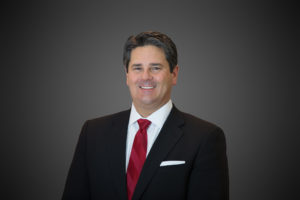
Worried Educators and Public School Advocacy Group members from Save Our Schools (S.O.S.), the Arizona Education Association (A.E.A.), and Red for Ed started to fill the capital on May 20 as details of a Republican only negotiated budget compromise, high on tax cuts and short on education funding, were revealed late Monday afternoon.
Seeing the many people in the Senate Gallery dressed in Red Shirts, Senate President Karen Fann jokingly commented, to the applause of the gallery guests and some Senators on the floor, that she expected to see many of them throughout the week. Given the details of the budget released on May 20, her comments are extremely prophetic as educators and other advocacy groups will surely be making their feelings known on the Republican fiscal proposal in committee hearing rooms and legislative galleries in the coming days.
It is apparent from the budget details released on May 20 that the Republican legislators and the Governor still believe Arizona is a Trickle Down Red State and all they need to do, as Senate Minority Leader David Bradley relayed, is to “placate,” not negotiate with Democrats by throwing some crumbs at education funding, infrastructure, and other social programs like Kids Care and hope that they shut up, gratefully accept these line item revenue increases as tokens of bipartisanship, vote for the budget, and go home.
That is not going to happen.
Before the budget details were released late Monday afternoon, educators were concerned that public schools may be shortchanged again as Democrats (despite the House members releasing their own budget ideas two weeks ago which called for greater education and infrastructure funding, an increase in Kids Care enrollment and a 30 million dollar investment in the Housing Trust Fund) were largely ignored and not invited to participate in the budget process.
Those concerns turned out to be correct.

Educators have made clear what school priorities they expect the Legislature to fund. These desires, voiced by A.E.A. Government Relations Director Stephanie Parra in the Democratic Member Senate Caucus room before the budget details were released, included:
• An increase in the base amount funding levels so all salaries (instructor and staff) are fully raised.
• The raising of additional assistance levels so investments can be made in modernizing schools such as their technologies. Education advocates would also like these monies totally allocated for the next school year rather than spread out over five
.• More resources for capital improvements and construction.
• Grants where districts could allocate funds towards recruiting additional counselors, student resource officers, or both.
The budget situation, still fluid in terms of its scheduling to be considered (most feel it will be in committee on Wednesday, May 22), debating the details to reach a resolution (some like A.E.A. President Joe Thomas and Arizona Center for Economic Progress head David Lujan think the budget may not be resolved until June,) and actual support (Republicans do not appear to have the votes in the Senate,) is likely to galvanize most groups across the political spectrum.

When addressing the educators in the Democratic Caucus Room, Mr. Thomas called on everyone to reach out to their legislators and at least five other people they know to alert them about the budget that is about to be released, saying that the advocacy movement is essential to ensure that dollars that are available should be spent on public schools rather than other areas (he was possibly alluding to the now confirmed $386,000,000 permanent tax cut). Thomas relayed that the state still faces a teacher shortage crisis with 1600 classrooms in Arizona led by a nonqualified instructor and that it was necessary for the legislators to show respect to the teaching profession and keep the promises from 2018 by fully raising educator salaries as the first step to better recruiting qualified teachers.
When the Republican budget details were released late this afternoon, Ms. Parra commented that:
“The proposal is unacceptable. The $386 million in tax cuts is not what Arizona voters are calling for. They want fully funded schools. We know this proposal doesn’t have the votes to pass and encourage Governor and GOP leadership to work on a truly bipartisan budget that reflects a significant investment in our schools.”

Former State Senate and House Democratic Leader David Lujan of The Arizona Center for Economic Progress noted that:
“The proposed budget contains $386 million in new, permanent tax cuts at a time when Arizona’s public schools, community colleges, and universities still have less funding than a decade ago. They could use that $386 million to address our teacher shortage crisis or the lack of supplies and other resources in classrooms. Instead, they are giving out a huge tax cut and asking Arizona’s students to continue waiting for the resources they need.”
Instead of adapting to the new realities at the State Legislature and the mood of the people after the 2018 election, most Republicans still appear to be dismissive of those results and content to ram through their trickle-down tax cutting funding priorities without soliciting input from Democrats in the spirit of finding consensus and moving the state forward.
Republicans would do well to abandon this reactionary kamikaze course, let Democrats into the political sandbox, work together for the good of the state, and arrive at a budget agreement that prudently and properly invests in all people.
Otherwise, the citizens of Arizona will remember in 2020 and 2022 which political party put tax cuts for the wealthy few over fully funding public schools, caring for impoverished children in need of health care, and providing housing assistance to the state’s most vulnerable residents.
Discover more from Blog for Arizona
Subscribe to get the latest posts sent to your email.
